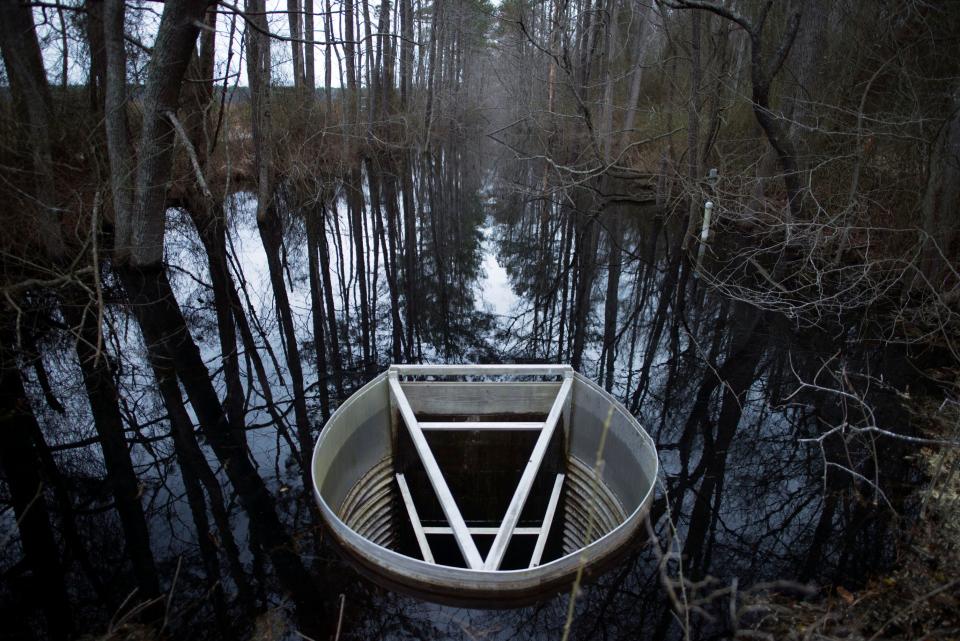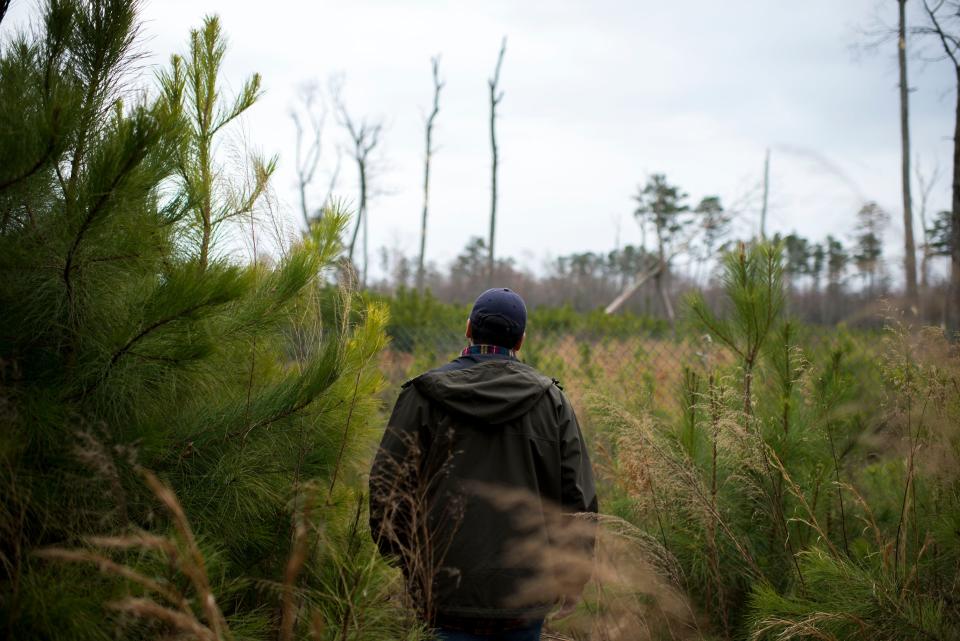Restoration at Great Cypress Swamp after centuries of timbering, fires and draining
Down along the state line in Frankford exists Delaware’s largest freshwater wetland and contiguous block of forest, and perhaps its last truly wild land: the Great Cypress Swamp.
At one time, the 50,000-acre swamp sprawled throughout Sussex County and Maryland’s Wicomico and Worcester counties, serving as the headwaters of the Pocomoke River. Then came the timbering, the fires, the ditching and the draining.
Along the way, the swamp’s dense stands of baldcypress and Atlantic white cedar trees were used as a refuge for Native Americans, the Underground Railroad, bootleggers, criminals and deserters, various sources say, as well as one famed "Swamp Monster."
Delaware Wild Lands, the state’s largest nonprofit landholder, has been buying up parcels of the swamp for about 50 years. As developers strip and cover the rest of Sussex County with new homes, the Great Cypress Swamp may be the only natural area in southern Delaware actually getting bigger.
Believe it or not, back in the early 1990s, then-U.S. Senator Joe Biden floated the idea of turning the swamp into a national park. It never caught on, and today, it's not open for hiking. The Great Cypress Swamp is closed to the public, except for occasional educational tours.
"We're pretty strictly a conservation organization," said Delaware Wild Lands Field Ecologist Andrew Martin.
Why the swamp is important
You can’t visit the swamp, but you can see its benefits all around you.
The Great Cypress Swamp is home to one of the northernmost baldcypress stands in the nation, recognizable by the knobby “knees” poking out of the tannin-darkened swamp waters. Martin thinks the oldest baldcypresses left in the swamp are about 200 years old.
The bigger and older the tree, the more carbon it can store. Trees like baldcypresses, which can grow up to 120 feet tall and live for 600 years, the Maryland Department of Natural Resources website says, contribute greatly to air quality.
The swamp is also important to the environment because it filters, stores and moderates rainwater, according to one of Delaware Wild Lands' partners, nonprofit Wild Earth Allies. As part of the Delaware Inland Bays and Chesapeake Bays watersheds, the Great Cypress Swamp is crucial to the water quality of both.
Martin called the swamp "a bastion of both plant and animal diversity," and a 2022 Wild Earth Allies survey showed a 124% increase in plant diversity compared to the 1990s, thanks to restoration efforts. Plant diversity, in turn, leads to wildlife diversity.
As one of few people to frequent the swamp, Martin has seen golden eagles, river otters, spotted turtles, gray foxes, wood ducks and carpenter frogs. He took over the job from his father, Peter Martin, upon his retirement.
Great Cypress Swamp: Delaware swamp has folks talking about its weird folklore with monsters, slaves, and more
“Growing up, we’d very occasionally hear a carpenter frog, with the ‘clack-clack-clack' call,” he said.
Around the year 2013, he was in the swamp when he heard a rumbling.
"It sounded almost like a piece of heavy equipment, and it took me a minute to figure out what it was. It was actually a chorus of carpenter frogs," Martin said.
Storied history
Yet, for the past few hundred years, the Great Cypress Swamp was not the wildlife haven it is today.
Early American colonizers started logging the Great Cypress Swamp’s rot-resistant baldcypress trees in the 1700s, which continued for over a century. In the 20th century in particular, the swamp was ditched and drained for farming, which Martin said had the biggest impact.
Because it’s been through several fires, the Great Cypress Swamp is also known as the Burnt Swamp. Most stories about the swamp tell of two fires, but old newspaper articles tell of many.
The most recent occurred around 1930, which was a time of extreme heat and severe drought in Delaware. The fire burned 5,000 acres and lasted months, according to local historian Michael Morgan. It’s believed to have started with an exploding moonshine still.
Prior to that, news articles throughout the late 1800s told stories of fires in the Great Cypress Swamp. Shingle-makers used to dig up buried logs by first burning away the top layer of peat, the fires of which sometimes grew out of control, one article said.
“The Cypress Swamp was still on fire. The amount of damage done cannot be ascertained with any degree of certainty. The smoke was so dense ... the morning on which we passed through Dagsboro that we could not see a house in town,” an 1869 letter to the Smyrna Times said.
In 1892, a Delaware Gazette and State Journal article says, smoke from a Great Cypress Swamp fire was so dense, train conductors all the way in Georgetown couldn’t see the fences alongside the tracks.
A 1782 fire may have been the worst. Multiple sources said it could be seen from as far as Philadelphia.

How Delaware Wild Lands is restoring the swamp
Delaware Wild Lands started purchasing acres of the swamp in the 1970s, starting with an about 5,000-acre parcel on the north side of Route 54. Today, they’ve pieced together over 10,000 acres.
Efforts to restore the swamp started with, of course, rehydrating it. Water control systems were installed in 2011 that allow staff to flood certain areas.
"Since we've done that, we've really seen a pretty dramatic transformation in that area of the swamp," Martin said. "Areas that had reverted to sweet gum and red maple, some of those trees are dying out and we're seeing the natural expansion of baldcypress trees."

Over 200,000 trees have been planted by Delaware Wild Lands and their partners. Some plots also serve as experiments, such as tube-supported vs. non-supported saplings. A deer management plan was enacted to minimize plant damage.
Need a low-cost daytrip? : 12 Delaware nature centers with indoor and outdoor programs
Helping nature: Want a sustainable pollinator garden for bees, butterflies, birds? Here's what to do
Most recently, Delaware Wild Lands staff decided to restore the 25-acre Hickman Farm back to its natural state of forested wetlands. The ditches at the farm were turned to swales, small ponds were dug and one area was turned into a meadow-like habitat. Now, native trees are being planted, and eventually, part of the land will be flooded.
"Being able to not just protect such a vast contiguous forest, but to actively restore hydrology and critical species," Martin said. "Has had a major impact."
Shannon Marvel McNaught reports on southern Delaware and beyond. Reach her at smcnaught@gannett.com or on Twitter @MarvelMcNaught.
This article originally appeared on Delaware News Journal: Great Cypress Swamp is rebounding after shrinking for centuries,
